TonUINO Box
Table of Contents:
The idea
My son likes to listen to radio plays and audio books. So he always approached me asking to turn on some plays of Pumuckl or some other series. At some point in time I decided, that he needs to be able to listen to these things on his own in his room. However he’s not in school yet, so reading the playlist of an mp3-player is not something I can ask from him. Buying one of those readily available systems with figurines also wasn’t an option, because they are locked-in systems. Fortunately I stumbled over an open source project called TonUINO. This implements a children-ready music-box around an Arduino micro-controller together with a hardware mp3 player module and an RFID reader. Some additional stuff is also needed, like buttons and a speaker.
Fortunately I had a damaged JBL Charge 4 speaker lying around, so I could recycle parts from it. Putting everything into the original enclosure wasn’t possible, so I designed a new case.
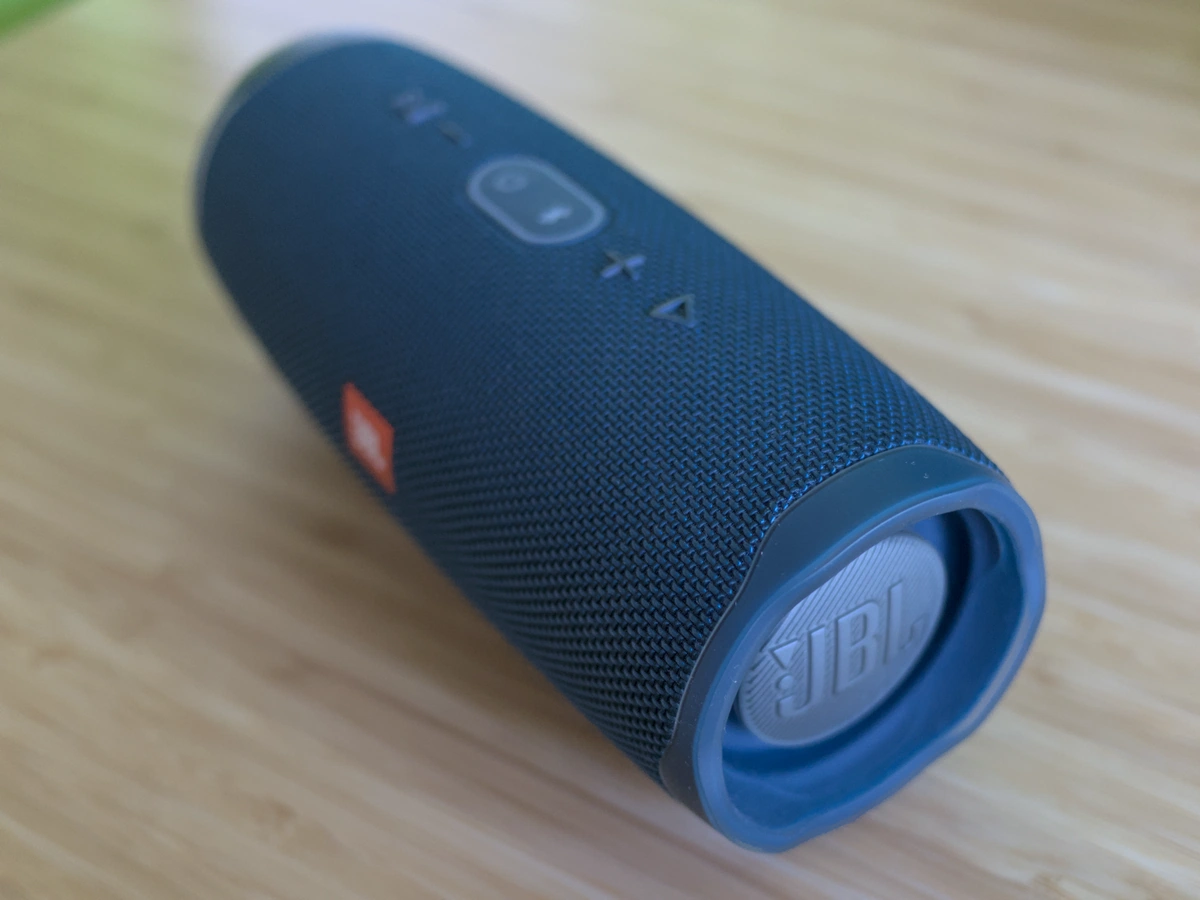
Designing an enclosure
Luckily I have the possibility to access a laser cutter at work, so the decision was born to design the new case from plywood and let the laser cut the pieces. Sybren Stüvel, a developer at the Blender Institute, implemented an add-on to manage designs suitable for laser-cutting. This is called Flatterer.
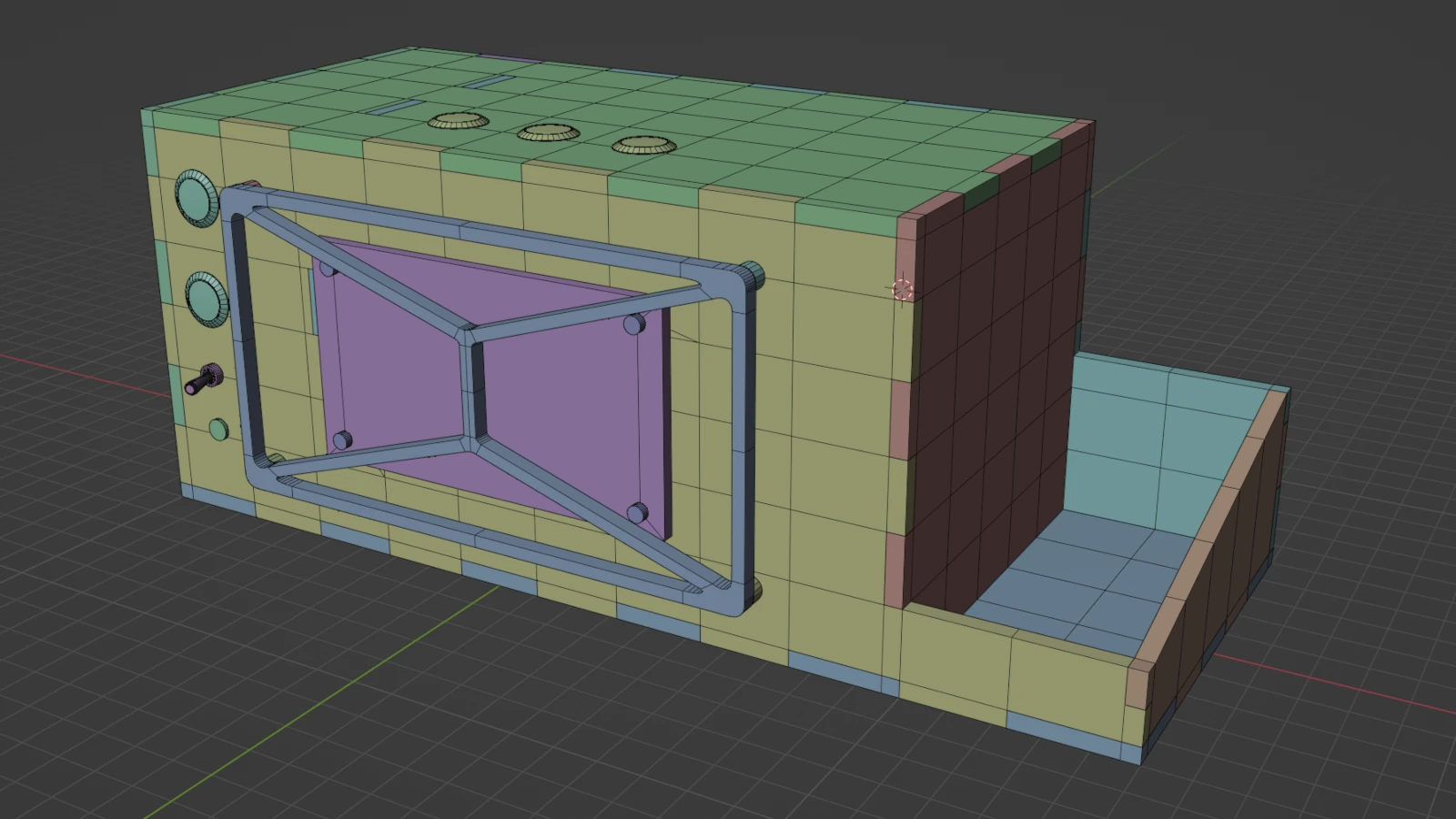
The overall experience of designing the case was very easy and quick. The flexible snapping options within Blender made designing the interlocked design of the boards very simple. It was also a huge relief to have block-outs of the electronics within the 3D world. This allowed me to place the openings for the power-cable and the SD card very easily.
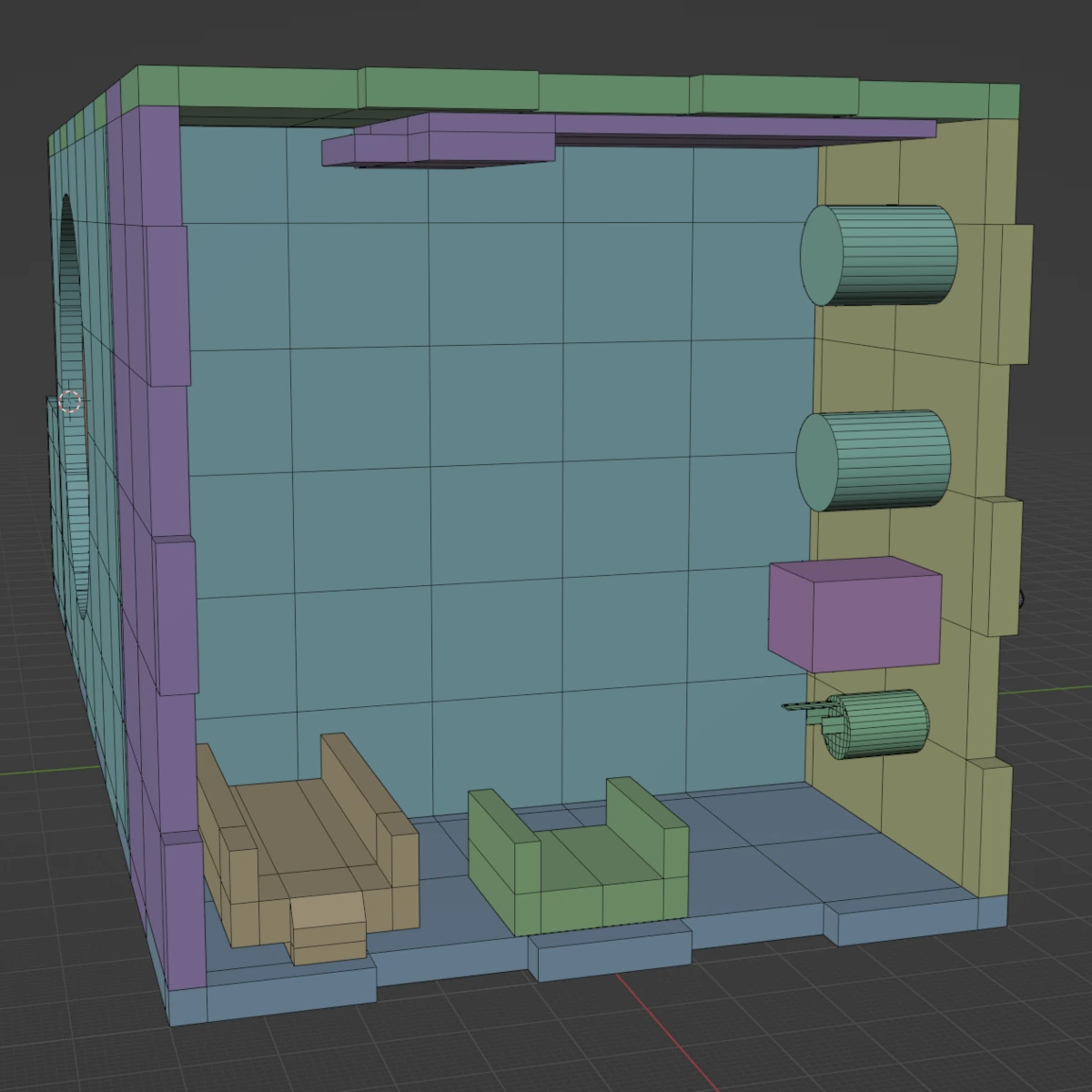
Since I don’t know anything about speaker design, I decided against doing the calculations of a bass-reflex tube, but instead do a closed design and incorporate one of the passive-radiators from the JBL speaker. Since the original design was a waterproof one, it was anyhow designed for a closed package. I just roughly tried to have a similar volume inside of my enclosure than the original one had.
Cutting wood
The first test, one needs to do for each new material being cut, is to determine the right power and speed settings. For the wood I chose, 3mm thick plywood of the poplar tree, I tested a low power range and medium speeds. The laser-cutter’s software allows to generate a pattern testing different combinations of speed and power.
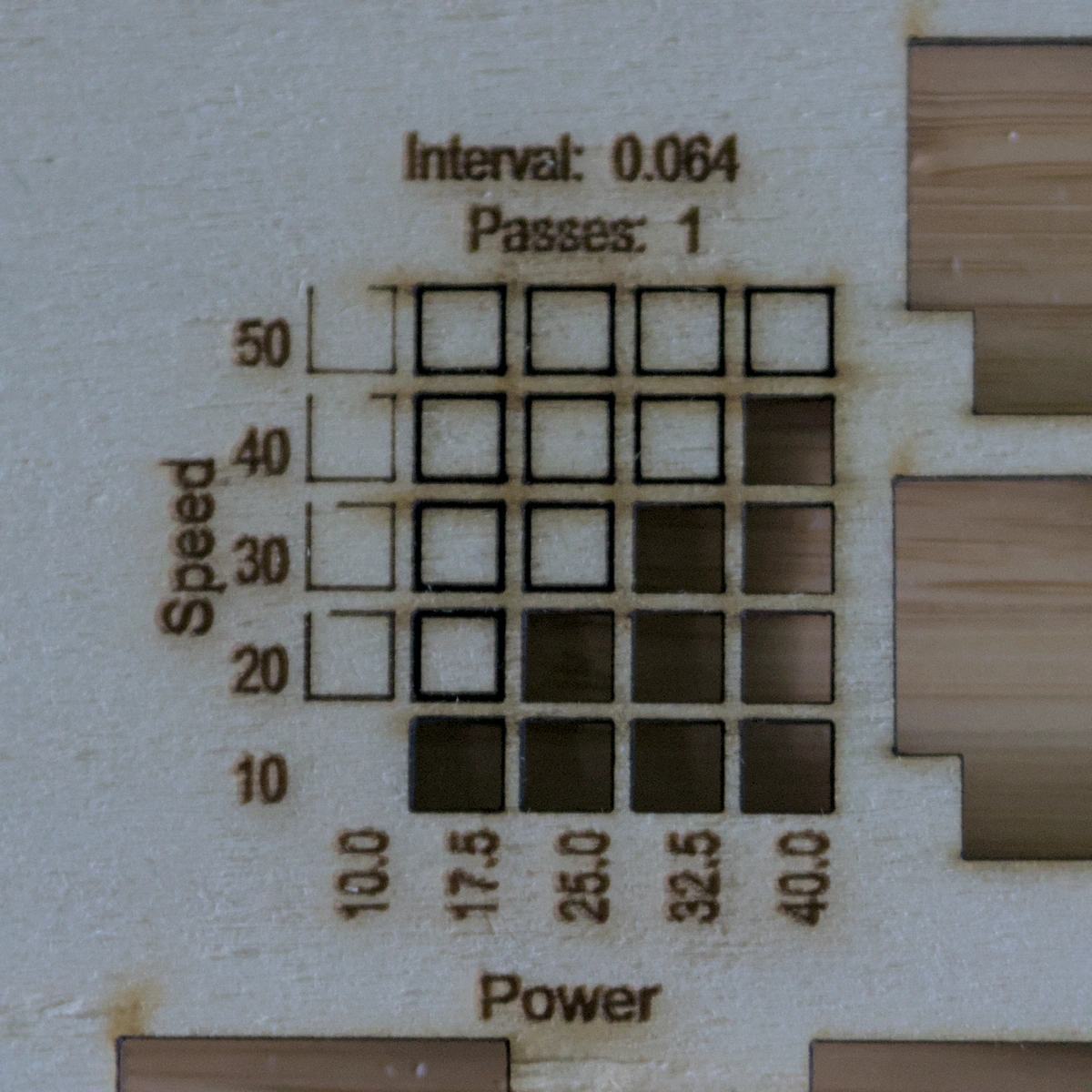
As can be seen here, too low power and too much speed will result in the wood not being cut. I decided to use a speed value of 30 and a power value of 33. Although Flatterer allows to calculate kerf into the svg, I decided to let the laser-cutter’s software do that task and I cut a couple of interlocked pieces with different kerf values.
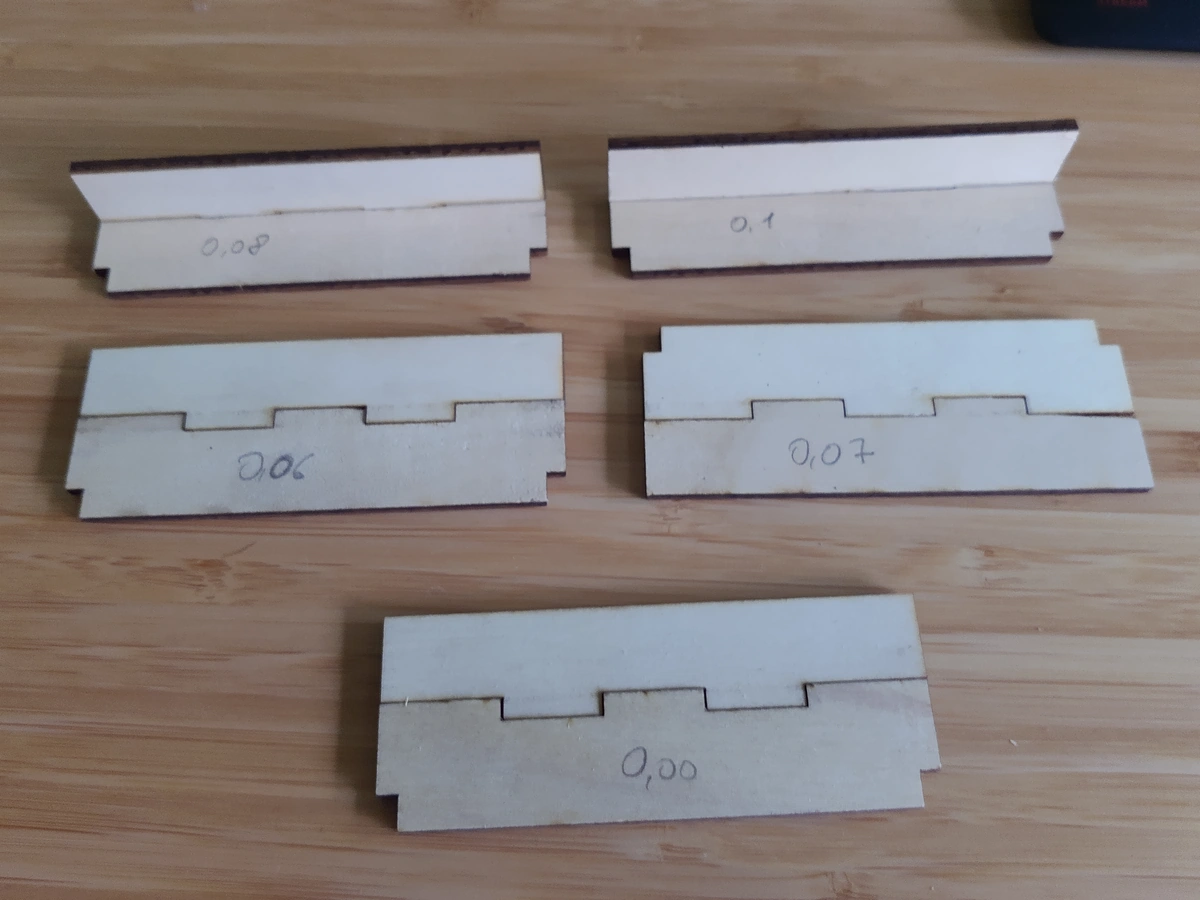
A kerf of zero, resulted in parts that were too loose. A kerf of 0.1mm was very tight and I was afraid to break the wood when separating the pieces again. In the end I used a kerf of 0.06mm, which was fitting well, but left some room for the glue.
Having found the right 3 values, cutting the designed pieces could start.
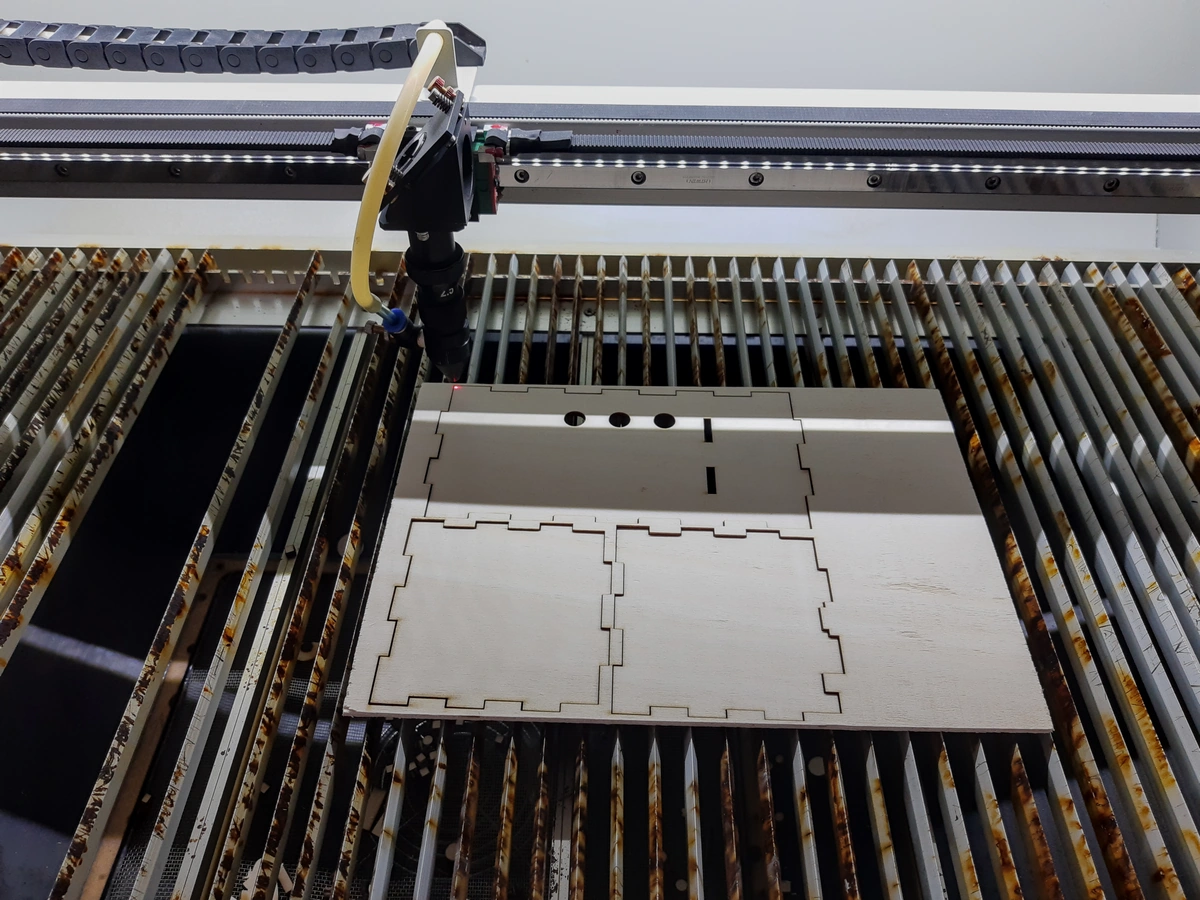
Putting everything together
The electronics were initially tested on a breadboard. After verifying, that all is working, assembling the enclosure started. Fitting in the electronics was quite a challenge.
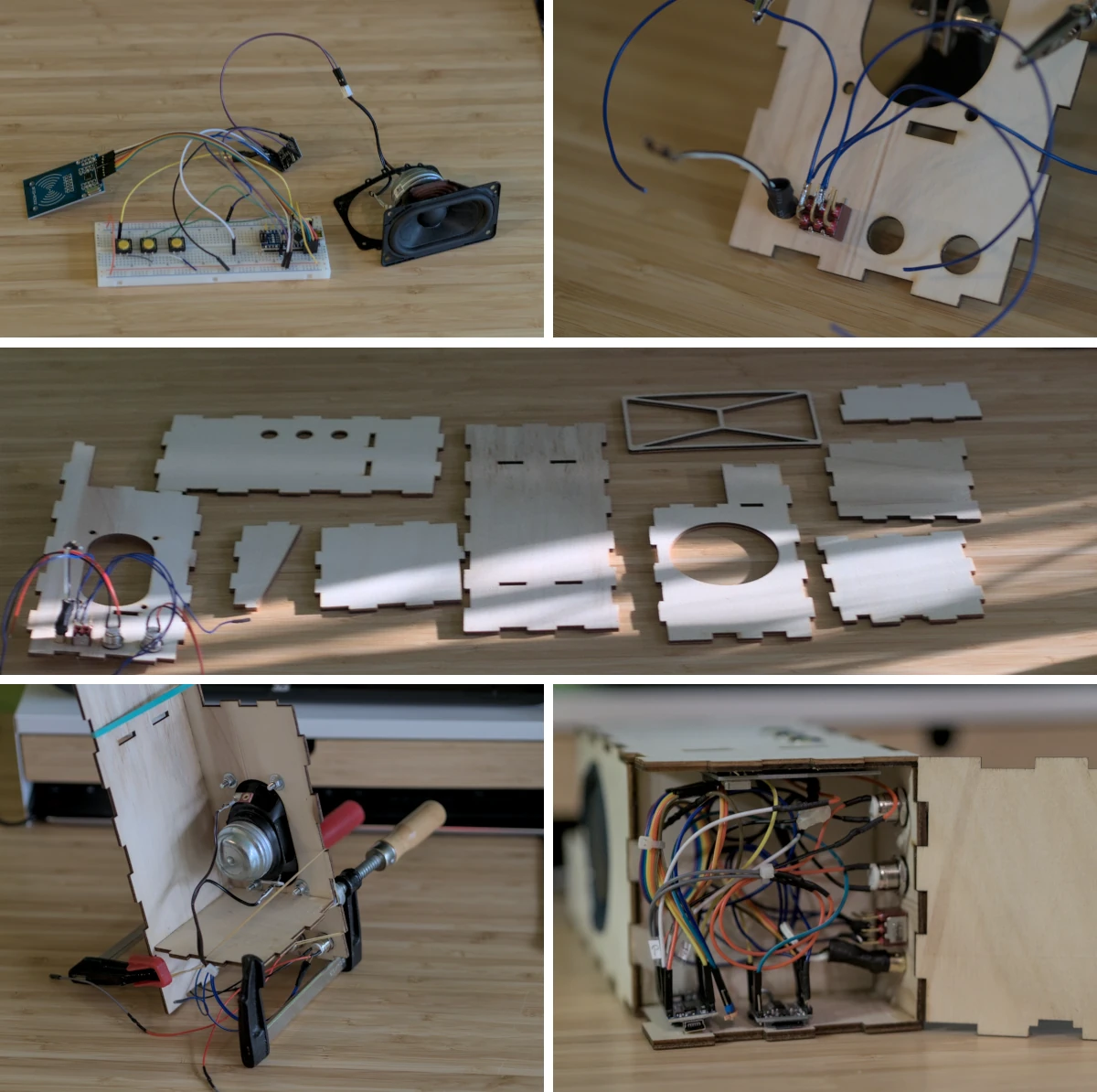
And here’s the finished product.
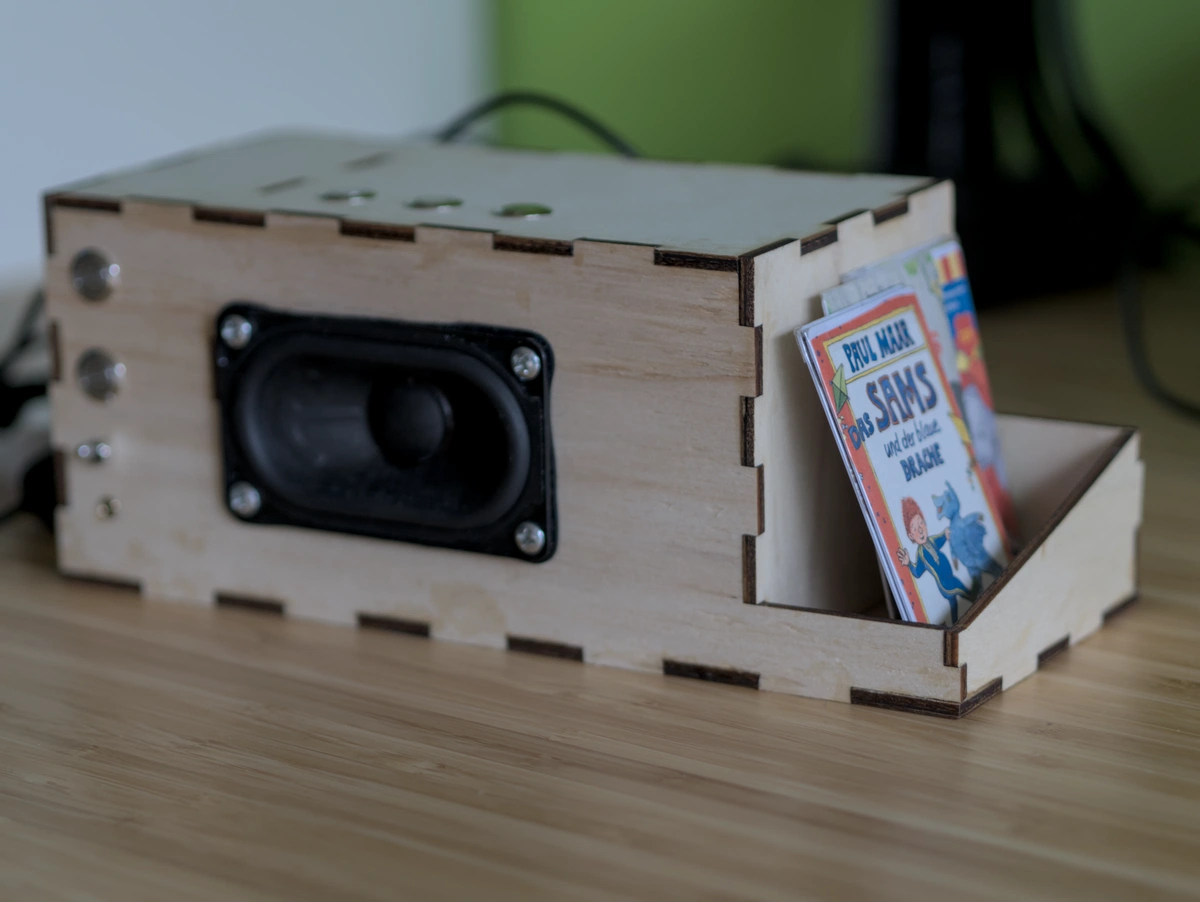
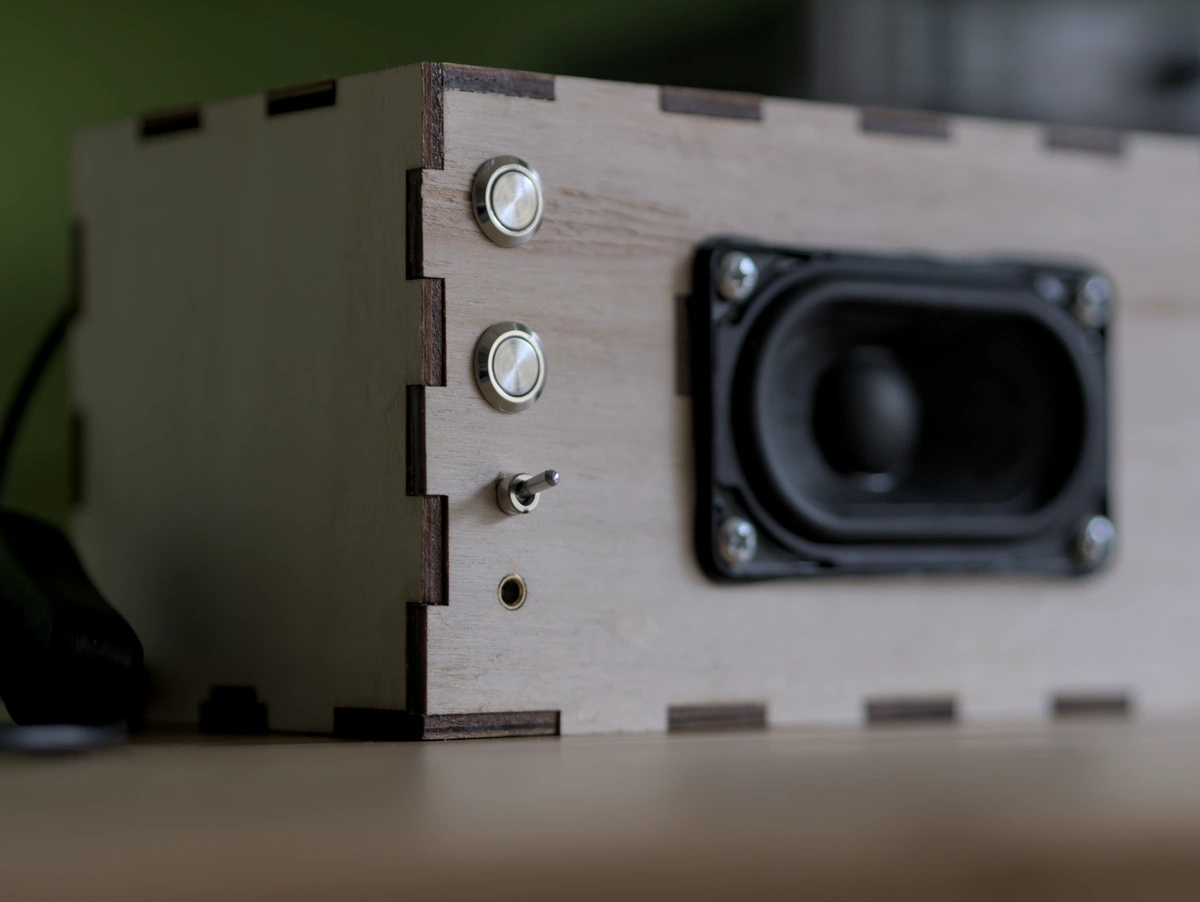
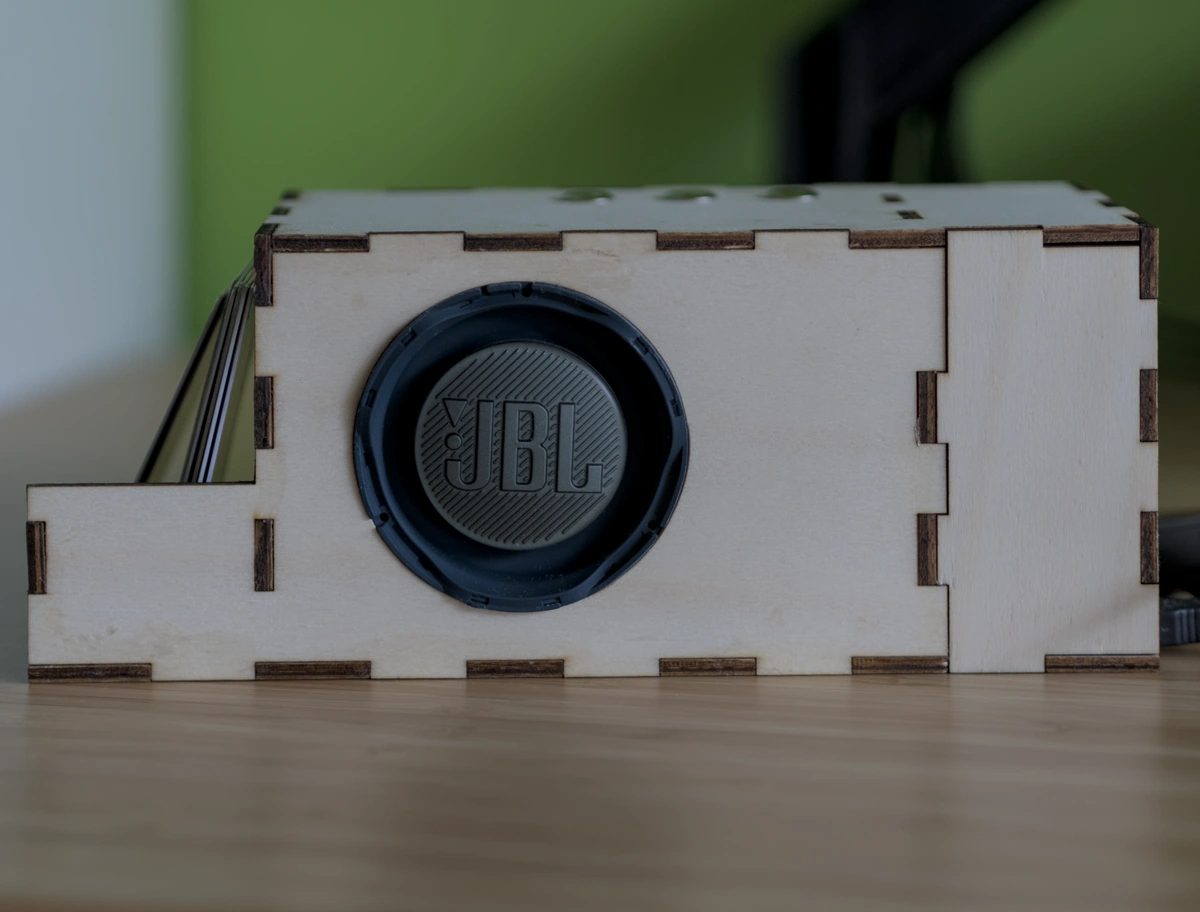
Since TonUINO is an open system, I was able to not only put audio books onto the system, but I also created 3 cards with music. Now my son started listening to best of albums of Queen, The Beatles and David Bowie. In the meantime he likes them even more than the audio books the thing was intended for.
Thanks to Sybren for creating the Flatterer add-on. Without it, this project would have taken much longer.